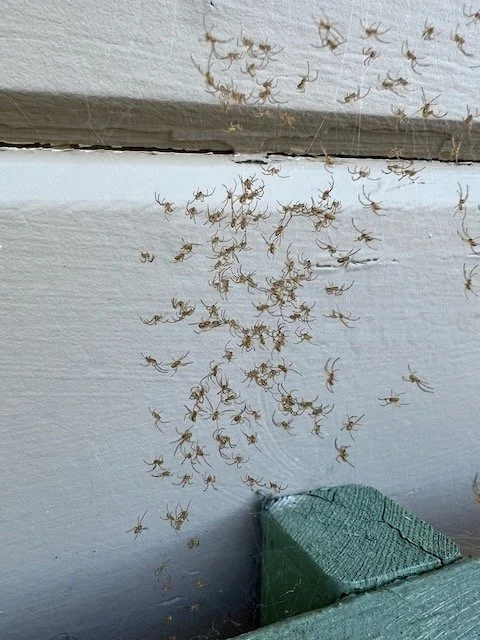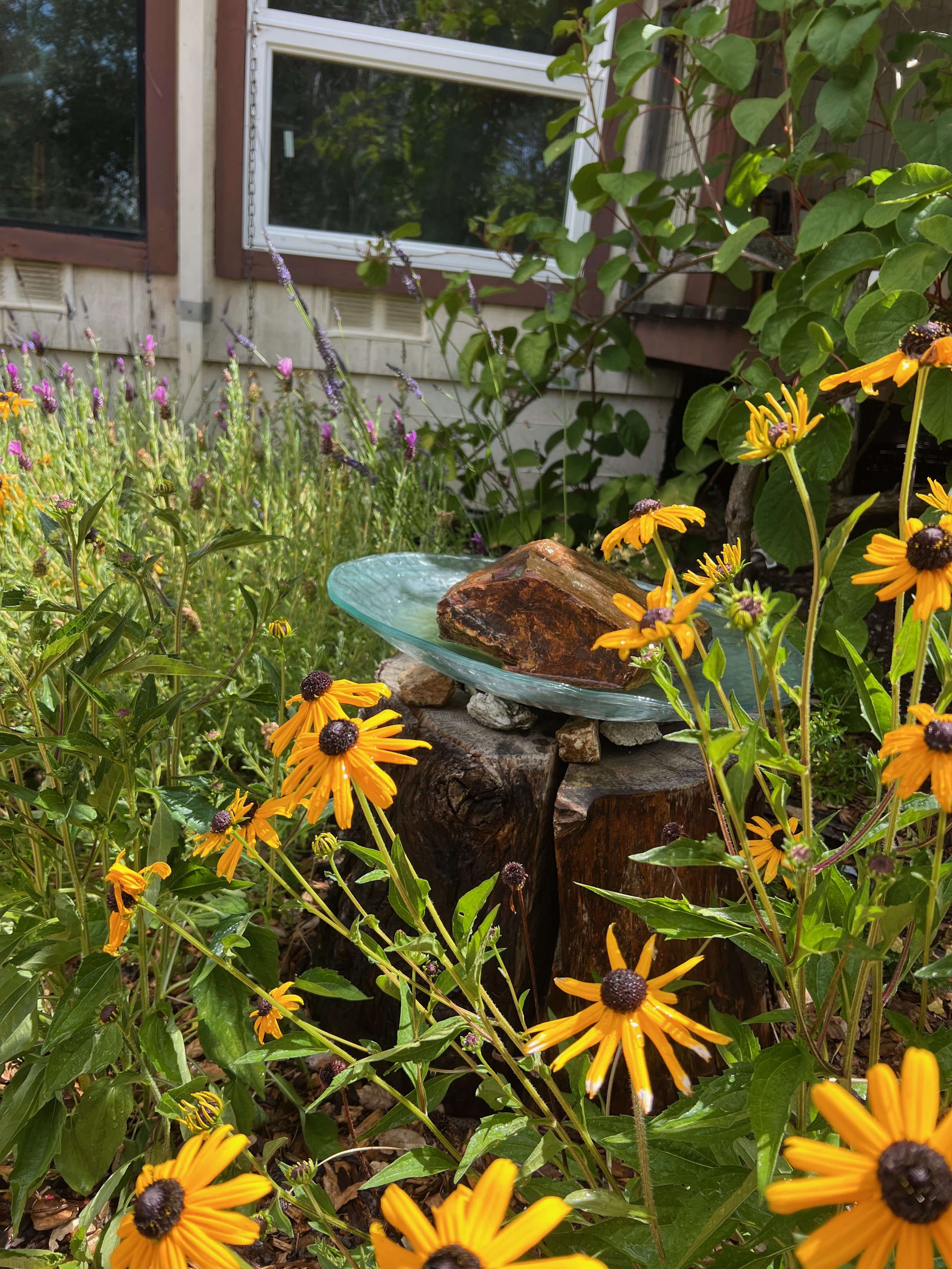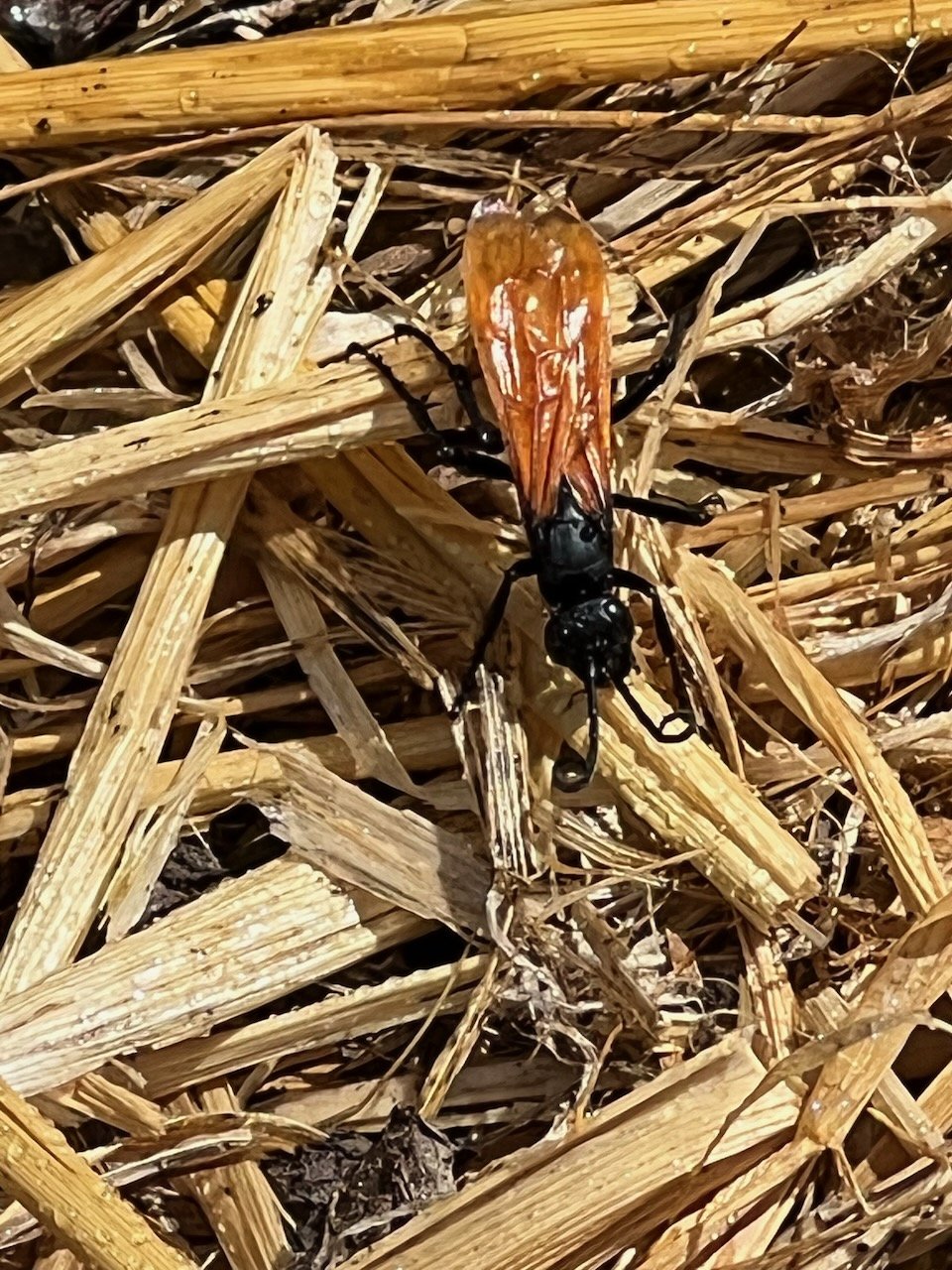I found this female and her egg sac about a week ago, nesting behind a large planter made out of wood and gutters. At the moment, this planter is filled with nasturtiums which died in our most recent heatwave, so I won’t be showing you the planter itself. I will say that I’ve tried many a flower (and berry) in these shallow gutters, and the nasturtiums fared the best yet; it’s hard to keep things wet enough here to stay happy. Anyway…. I was inspecting the dead flowers and trying to figure out what to plant next when I came across this beautiful Western Black Widow.
Now, I want to start out by acknowledging that if you do get bitten by a WBW, the bite will be quite painful and you’ll need emergency care. However, death is unlikely. WBWs are the most poisonous American spider and as such, they get a bad rap; but like many insects, they feel no need to sting humans, unless the humans happen to be messing around in their territory. Even then, unless the spider’s body is pinched repeatedly, it will not bite.
Despite knowing this, when I had little kids, I confess I killed many WBWs. They used to nest inside our wooden perimeter fence (they probably still do), and I was worried that a kid (either my own or a neighbor kid) would climb the fence and grab a spider inadvertently. That would have been bad. But I do feel terrible for killing them back then. If I had little kids now, I would explain all about the spiders and get the kids aware of how and where they live, so that we could all live in peace together. Oh well. We all evolve.
In fact, WBWs are described by arachnologists as ‘shy.’ They tend to hide in dark places where they will go unnoticed. They spin a huge, strong, messy, complicated web (not pretty at all), which is very unique to its species. I see far more WBW webs than I do the actual spiders, and it’s the primary way I figure out where they are living. They catch a lot of flies in those webs (as well as other insects and arthropods). They bite their prey in several places, and suck out their insides, leaving the external shell in the web.
The females also put pheromones on their webs to attract males. The male then performs a sort of ‘courtship dance’ on the web to let the female know he’s a potential mate, rather than dinner. Female WBWs don’t always eat the males after mating, either - it just depends on how hungry she is, how fit the male is, and how fast he scurries away.
There are hundreds of baby spiderlings in that egg case you see in the photo. They will hatch inside the sac, and then emerge. Most of them get eaten right away by their siblings. Very few survive, and those eventually (like the spiderlings in Charlotte’s Web) spin a long silk that takes them flying through the air to another part of the garden.
It’s been interesting to watch how the mother spider behind my planter protects her egg sac. Since I water there regularly (the plants don’t need the water anymore, being DEAD, but the bees like to drink from the soil there - wasn’t that spider smart to build her web in such a place???), the spray naturally hits the sac sometimes. She doesn’t love that, and will often move the sac behind a crosspiece to protect it. But spiders aren’t really ‘good’ mothers. Not in the sense we think of, anyway.
I must confess that spiders are not my favorite thing. I really like insects in general, but it’s tough for me to like spiders, and I’m not sure why. The way I combat this is to learn all I can about them. Anytime I see a spider than I’ve never seen before, I take a picture and use iNaturalist to ID it. Then I read about it and learn all about the ecosystem services it provides. This usually helps me to get over my ‘shivery’ feelings about spiders. I will say this is a work in progress for me, and I may never really like spiders. But I appreciate them, and see that they are an integral part of biological processes. We need them. So - every time I walk by this WBW, I crouch down and say hi. I’m actually looking forward to seeing the eggs hatch, and hope I get the privilege to witness it.
EDITED 7/22/24: SHE’S FEASTING Check it out!
Edited August 9, 2024 - the babies have hatched!
























